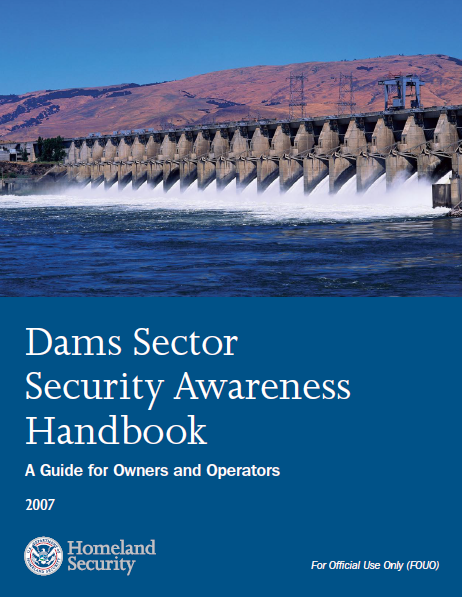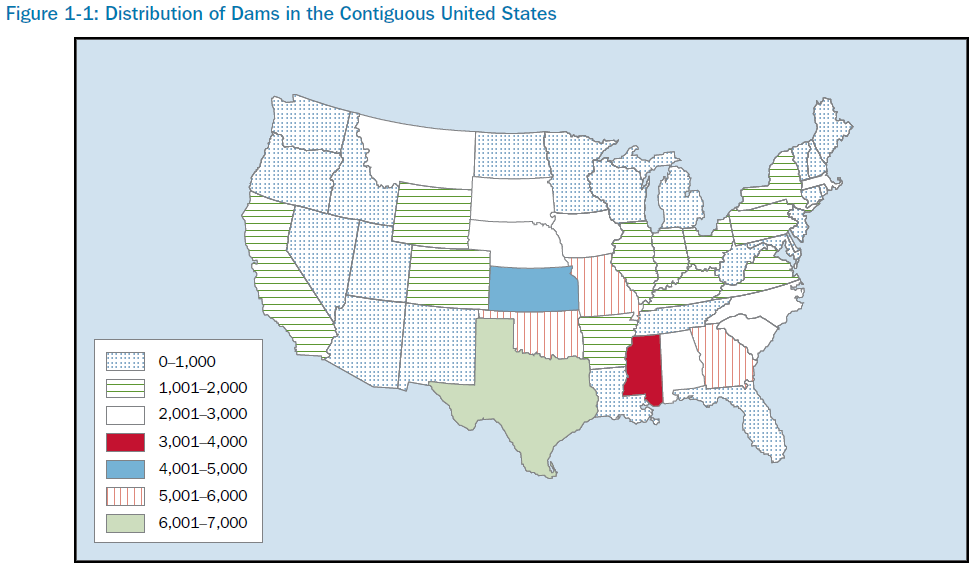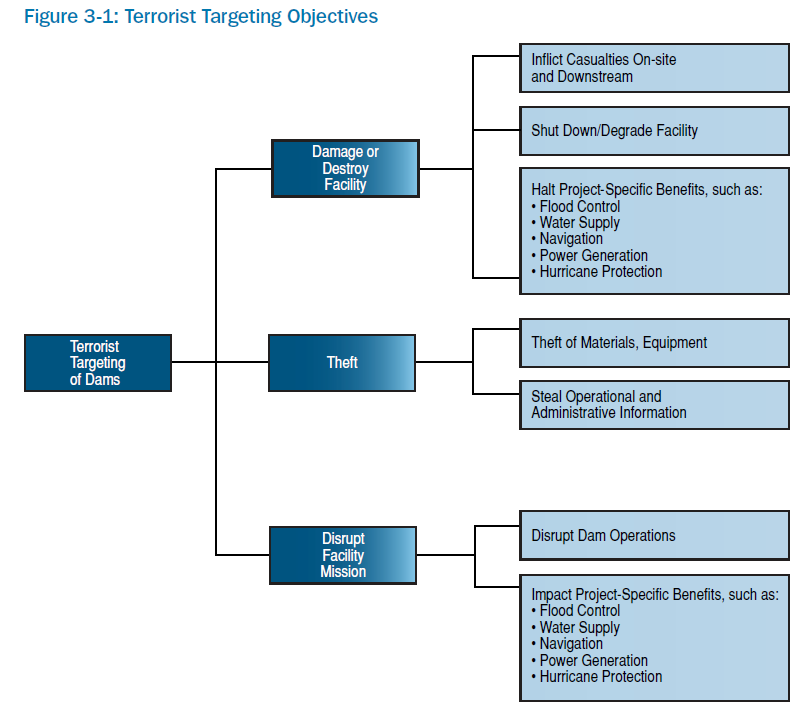Dams Sector Security Awareness Handbook: A Guide for Owners and Operators
- 69 pages
- For Official Use Only
- 2007
- 4.52 MB
Like all critical infrastructure, the technological and national security environment in which the U.S. dam infrastructure is operated and maintained continues to evolve over time. New threats to the continued reliability and integrity of all infrastructure requires vigilance. Areas of possible focus by owners and operators include: surveillance detection, identification of siterelated vulnerabilities (e.g., access control, operational security, and cyber security measures), emergency response/prevention issues, and functionality issues governed by interdependencies with other infrastructure assets.
The Dams Sector is comprised of the assets, systems, networks, and functions related to dam projects, navigation locks, levees, hurricane barriers, mine tailings impoundments, or other similar water retention and/or control facilities. Dam projects are complex facilities that typically include water impoundment or control structures, reservoirs, spillways, outlet works, powerhouses, and canals or aqueducts. In some cases, navigation locks are also part of the dam project.
To address security issues related to dams, a partnership approach has been adopted involving Federal, State, Territorial, regional, local, or tribal government entities; private sector owners and operators and representative organizations; academic and professional entities; and certain not-for-profit and private volunteer organizations that share in the responsibility for protecting the Nation’s critical sector assets.
The Nation has more than 100,000 dams. Of this number, approximately 82,000 are listed in the National Inventory of Dams (NID), which generally includes dams greater than 25 feet in height or reservoirs having more than 50 acre-feet in storage capacity. In the NID, the downstream hazard potential (e.g., the amount of risk or damage a dam can pose because of failure or negligent operation) is classified as high, significant, or low. In the current NID database, approximately 12,000 dams are classified as high hazard potential from a dam safety perspective. However, only a very small percentage of high-hazard dams represent a potential for causing mass casualties.
Dams are a vital part of the Nation’s infrastructure and are among its key resources. Dams provide a range of economic, environmental, and social benefits, including irrigation, electric power generation, “black start” capabilities, water storage, recreation, navigation, flood mitigation, sediment/hazardous materials (HAZMAT) control, and mine tailings impoundment.
…
Table 2-1: Site-Related Potential Vulnerabilities
Access and Access Control
- Dams may experience large numbers of visitors because of associated water-based recreation and, in some cases, the dam is a tourist attraction.
- Public roads or rail lines may pass through, pass over, or be adjacent to some sites, and larger dams often have a road along the top.
- Dams are typically accessible by water, allowing possible water-borne or waterside attack.
- Access to critical assets (e.g., control rooms, powerhouses, and transmission equipment) is generally controlled through gates, doors, and fences that may not be adequately protected.
- Critical assets (e.g., control areas) may be close to the perimeter fence.
- Critical assets (e.g., transformers) may be partially exposed or out in the open.
- Dams may be unguarded or have unarmed security guards.
- Access controls based on cards or badges might not positively identify the user.
- Employee and visitor parking may be located adjacent to critical buildings.
- Lighting and monitoring of entrance points may be limited.
- Intrusion detection system (IDS) and closed-circuit television (CCTV) configurations to detect and assess intrusion into restricted areas (including water areas) may be in need of updating or realignment.
- Critical assets might not be adequately protected.
- Dams may be located in remote, rural, or semi-rural locations.
- Procedures to inspect vehicles for explosives and/or dangerous materials before allowing such vehicles to enter the dam area may need to be updated.
- Dams may use contract guard services that vary in the quality of support.
- Signs posted to deter vehicles, boats, or pedestrians from entering unauthorized portions of the premises might be missing or damaged.
- CCTV assessment might not fully cover some critical assets.
- Lighting, in support of CCTV assessment, may be limited.
…



